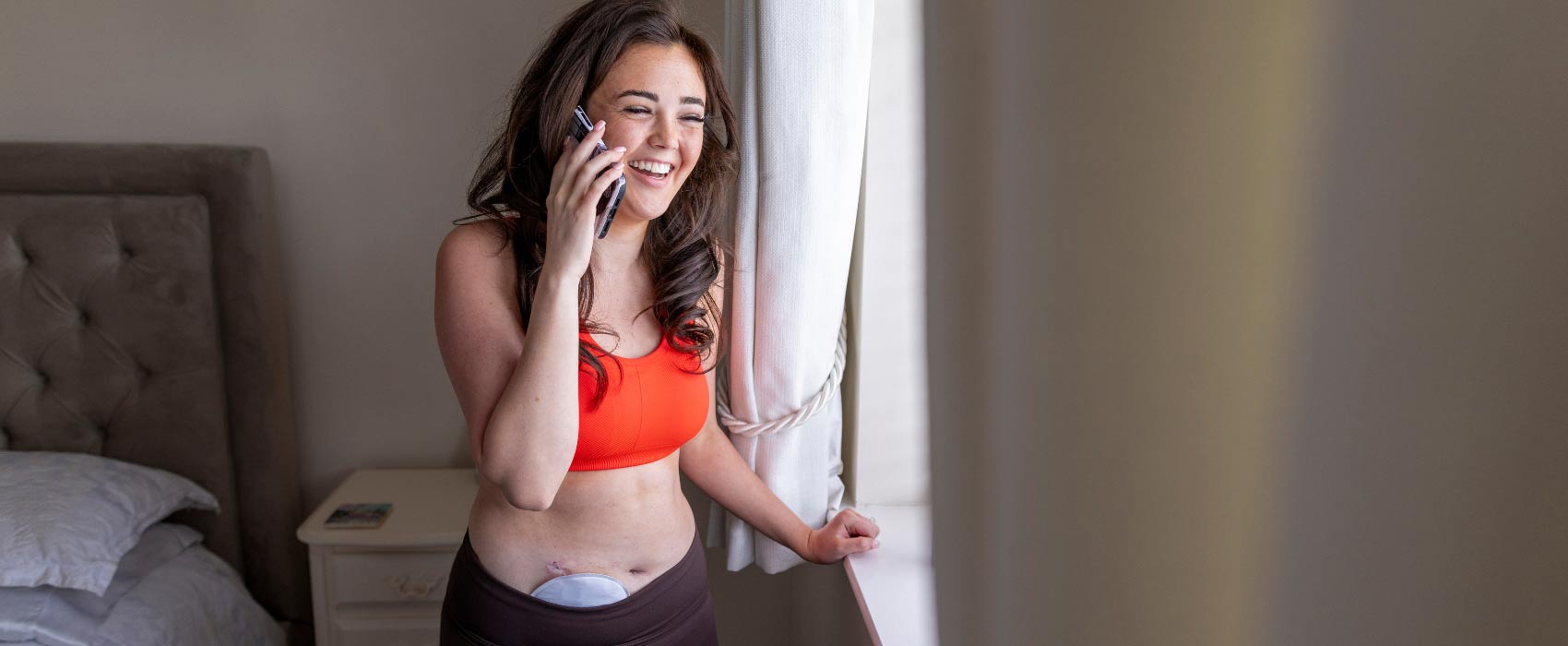
Regardless of your age, gender, or occupation, living with an ostomy can feel a bit overwhelming at first. Following your surgery, you'll need to learn about different ostomy pouching systems and ostomy accessories, as well as how or when to use them. While your ostomy nurse will be there to help you learn all about ostomy products and how to use them, it can be a lot of information at once. To make sure you're properly caring for your new ostomy at home, we created a comprehensive guide to ostomy supplies and how they're used.
The Different Types of Ostomy Surgeries
Understanding ostomy differences can help you determine the best supplies for your circumstances. The most common types of ostomies performed are:
- Colostomy — A surgical procedure that involves diverting the colon through an opening in the abdomen, allowing stool to be eliminated through a stoma.
- Ileostomy — A surgical procedure that creates an opening in the abdomen, connecting the ileum (the last part of the small intestine) to the abdominal surface to eliminate stool through a stoma.
- Urostomy — A surgical procedure in which a stoma is created to redirect urine from the bladder, often necessary when the bladder is dysfunctional or removed.
Your doctor or nurse will discuss your surgery in detail before the big day so you can ask plenty of questions and ensure you leave the hospital with all the information you need to prepare. Still, it can be difficult to adjust to living with a stoma and how to use all the products available. If you're struggling, consider joining an ostomy support group. To find options near you, look at the list of support groups affiliated with The United Ostomy Associations of America (UOAA).
Ostomy Systems to Choose From
The ostomy bag you choose is arguably the most important item for successful ostomy care. There are a few specifications you should know about in order to find the right system for your needs. The two primary types of pouching systems available are one-piece and two-piece systems.
- One-Piece Pouching System — the ostomy bag and skin wafer or barrier are connected. If you change your pouch, you must remove the bag and skin barrier or wafer, requiring you to clean the peristomal skin between each bag change. Many one-piece systems are drainable pouches but can also be closed systems.
- Two-Piece Pouching System — the skin barrier or wafer and bag are separate accessories. Once you put the barrier/wafer onto your skin, it can be kept there for about two to four days. Therefore, when you change your pouch, you'll only need to detach the ostomy bag, empty it, and reattach it or throw it away.
You can also choose between a closed ostomy pouch or a drainable one.
- Closed Ostomy Pouches — closed systems are considered single-use ostomy bags and are not reusable. You'll remove and dispose of the whole bag whenever you need to "empty" your pouch. These are great for people who play sports but can also give you more confidence during intimate moments or when spending time in the water. Just make sure you have extra supplies when you go out, as you won't be able to drain these and reattach them.
- Drainable Ostomy Pouches — drainable options have an open-ended side at the bottom of the pouch, which can be released to drain the contents into the toilet. This reduces the amount of supplies you need to carry during the day and can help you avoid changing your ostomy pouch in public restrooms.
People with ostomies tend to have their own personal preferences for the type of bag they want to use, so talk to your doctor or ostomy nurse about trying a few options before placing a large order with your supplier.
Essential Ostomy Supplies
Finding the supplies that work for you can take a little trial and error, but with some patience, you'll develop a routine that supports your lifestyle. Remember, leakage, noticeable odor, and skin irritation aren't "normal" for an ostomate. While you may experience these issues or other ostomy-related complications occasionally, using the right ostomy kit and supplies can drastically reduce their risk. To help, consider some of the most essential ostomy appliances and how they're used.
Skin Barriers or Wafers
Skin barriers are used to connect your ostomy pouch to your abdomen. They also help protect the skin around the stoma from irritation, damage, and infection. You'll need to choose your preferred size and shape, then apply it around the stoma to create a good seal before adhering to your pouch. These are also commonly referred to as flanges.
- Pre-Cut Skin Barriers — these options will be sized and cut for you to help make changing your pouching system easier. They come in various shapes and sizes but are best for more rounded stomas that have stopped changing.
- Cut-to-Fit Skin Barriers — these are good for individuals with more unusually shaped stomas or those with stomas that are still changing. They allow you to customize your barrier to help prevent leaks and securely keep your ostomy bag in place.
Remember, if you have a two-piece system, the wear time of one skin barrier is about two to four days. Keep an eye on your seal; change it if you notice it getting loose.
Adhesive Remover
Adhesive removal is another great accessory to add to your kit. It can help keep the area clean around your stoma and reduce the risk of infection. You'll use this whenever you change a skin barrier or wafer to remove any excess adhesive before reattaching a new one. Adhesive removers often come in wipes, but there may be other options depending on your preferences.
Ostomy Skin Barrier Wipes
These wipes are a great way to clean the peristomal skin and reduce the risk of irritation or infection. They're best used between pouch changes when putting a new adhesive wafer or flange onto your skin. Ensure you allow the area to dry thoroughly before applying the new adhesive.
Ostomy Barrier Rings
Barrier rings are attached to the skin around the stoma before the skin barrier to help create a stronger seal. They come in a variety of sizes and can be beneficial to individuals who have uneven skin around their stomas.
Skin Barrier Paste
Like barrier rings, stoma paste can also help fill uneven areas between the skin wafer and your stoma. This helps prevent leakage and ensures a good seal. You may be able to find this in adhesive strips or a squeezable paste, so try them both to see which one meets your needs.
Stoma Powder
Stoma powder can be applied to the skin and provide a drying effect to help promote stronger adhesion. It can also heal or nourish damaged or irritated peristomal skin.
Extra Ostomy Supplies to Consider
There are also a few additional accessories that aren't necessarily required but can help new ostomates feel more confident and secure navigating their new normal. Consider these additional accessories to make sure you live your best life with an ostomy.
Odor Control Accessories
Although you shouldn't be experiencing strong smells with a good seal, several products are available to help minimize odor. There are sprays and tablets you can put inside your pouch to help, which can improve your confidence when you're out and about.
Ostomy Belts
Some ostomates use ostomy belts to help keep the wafer tightly in place against their body. These are great options if you're going to be playing sports or doing any intense exercise and want a little extra security.
Supply Organizers or Bags
To keep all of your ostomy supplies in one place, consider getting an ostomy organizer or bag. You don't need something specifically created for medical supplies, but having a dedicated backpack or tote bag can help ensure you have everything you need when you go out.
Where to Find Your Ostomy Supplies
Wearing an ostomy bag and using the accessories might not be too glamorous, but thanks to innovative products and advancements in ostomy supplies, ostomates can protect the skin around your stoma and enjoy all of their favorite activities. However, you're not likely to find the ostomy supplies you need in your local Walgreens or CVS, so partnering with a medical supply company like Byram Healthcare is important.
Byram is committed to doing our part to improve the lives of those living with ostomies through convenient product delivery and a diverse product catalog. We work with Medicare, Medicaid, and most private insurance companies to help you get the most out of your healthcare plan. Contact us today to get started with your order or if you have any questions about our products.




